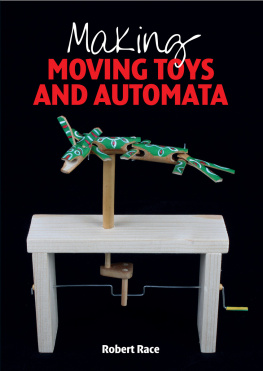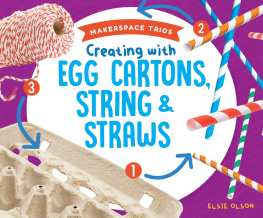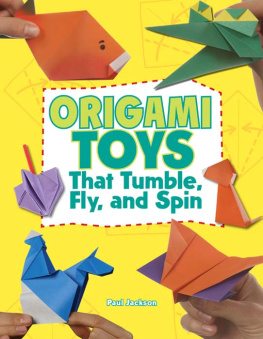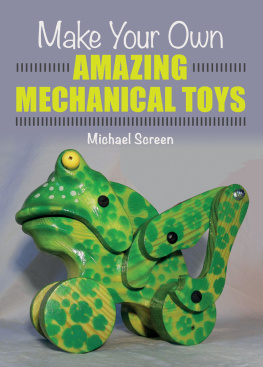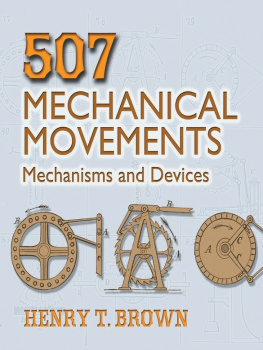Making
MOVING TOYS
AND AUTOMATA
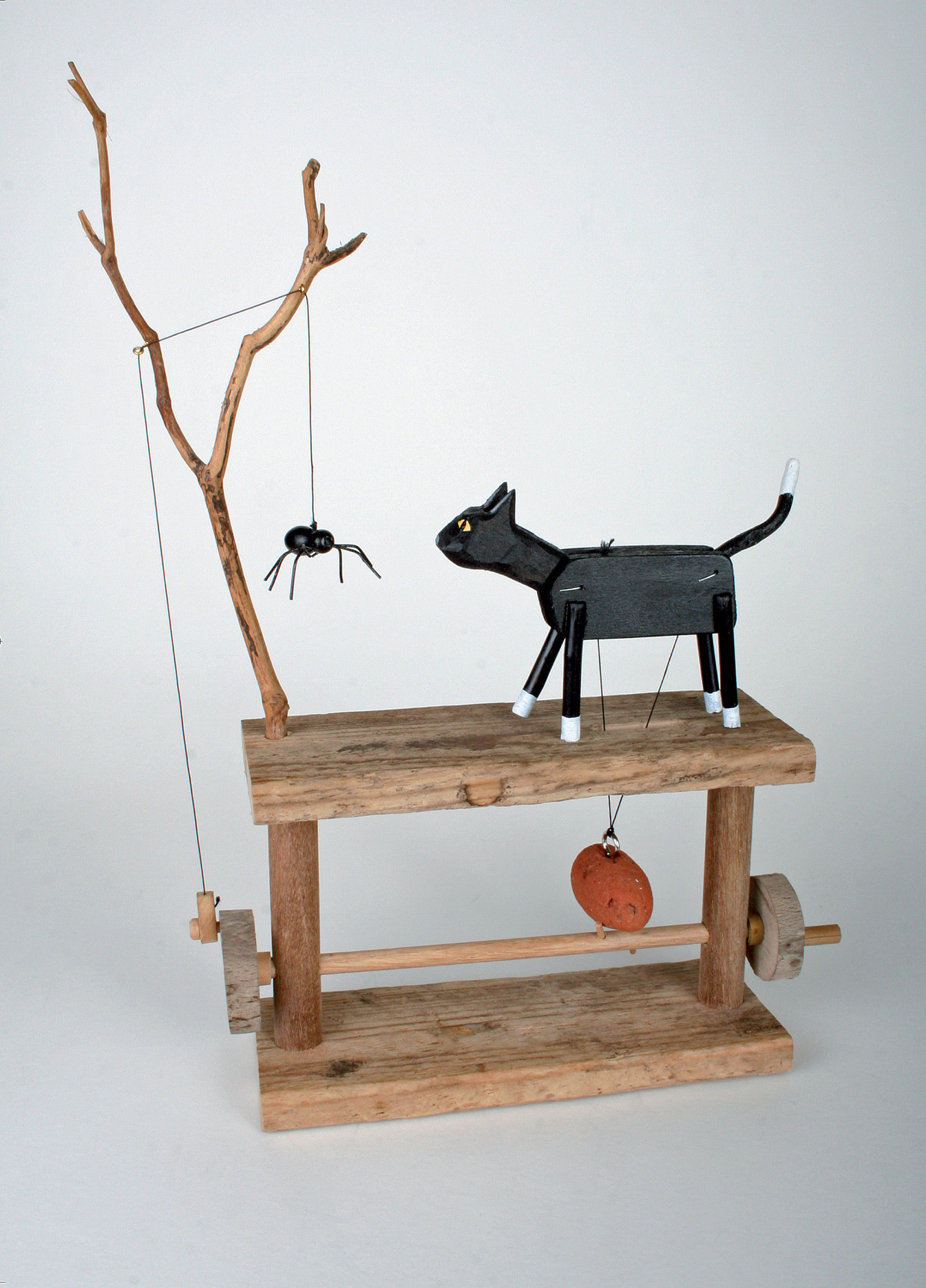
Making
MOVING TOYS
AND AUTOMATA
Robert Race

THE CROWOOD PRESS
First published in 2018 by
The Crowood Press Ltd
Ramsbury, Marlborough
Wiltshire SN8 2HR
www.crowood.com
This e-book first published in 2018
Robert Race 2018
All rights reserved. This e-book is copyright material and must not be copied, reproduced, transferred, distributed, leased, licensed or publicly performed or used in any way except as specifically permitted in writing by the publishers, as allowed under the terms and conditions under which it was purchased or as strictly permitted by applicable copyright law. Any unauthorised distribution or use of thistext may be a direct infringement of the authors and publishers rights, and those responsible may be liable in law accordingly.
British Library Cataloguing-in-Publication Data
A catalogue record for this book is available from the British Library.
ISBN 978 1 78500 492 6
All photographs are by the author unless stated otherwise.
Frontispiece
Cat and Spider.
CONTENTS
INTRODUCTION
This book is about designing and making small-scale automata. The emphasis is on using readily available materials, such as scraps of wood and wire, card and paper, bamboo, skewers, string, tinplate, and feathers. Of course, using the phrase readily available does rather evade the issue; what is readily available will vary greatly according to circumstances. Many of the materials I use in my moving toys and automata are recycled or re-used, such as redundant packaging, off-cuts and driftwood.
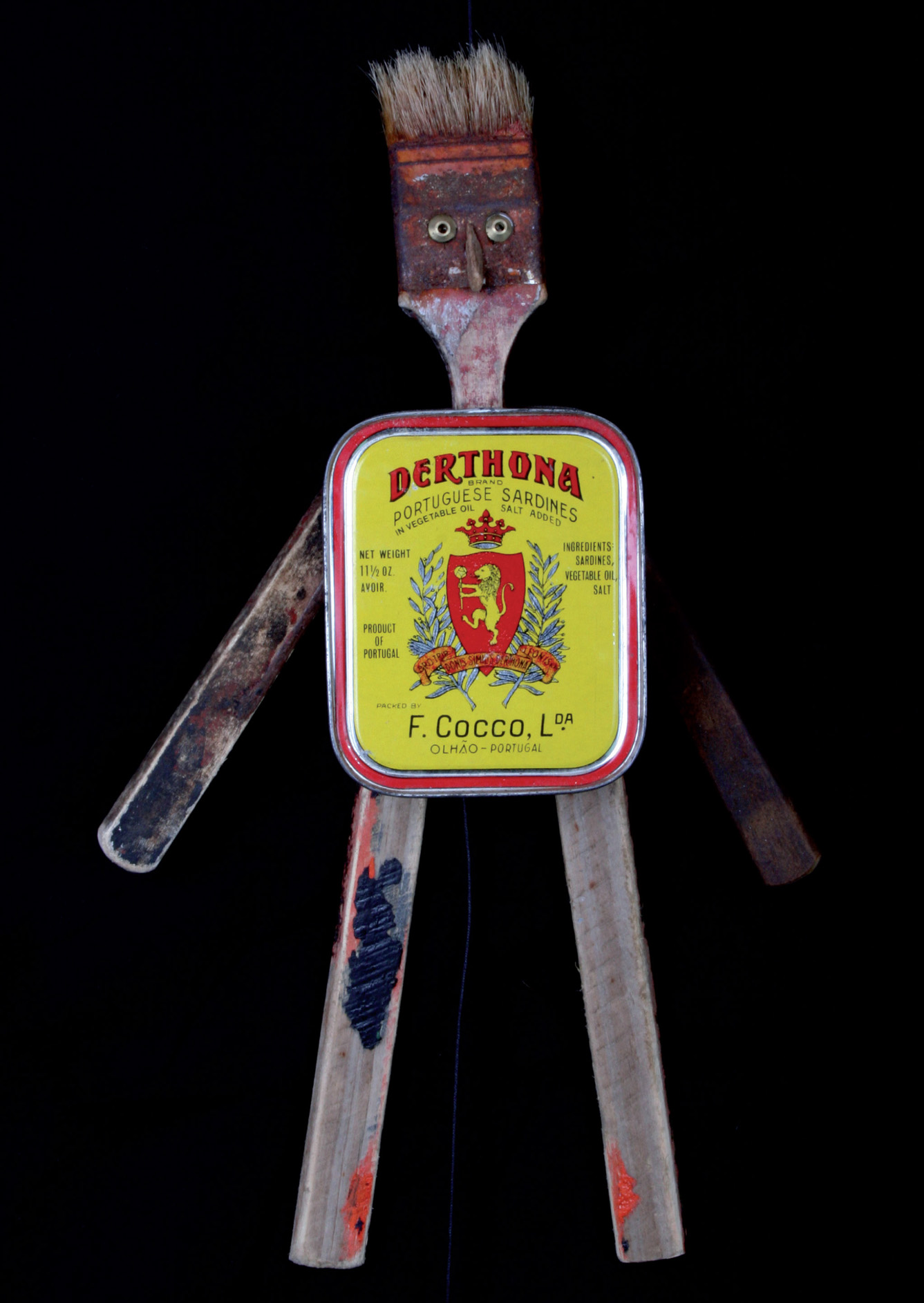
A jumping jack made by the author from a sardine can and a used paintbrush. Pulling the string makes the wooden limbs dance about.
In the course of the book a number of simple mechanisms are explored, such as levers, linkages, cranks and cams. Also considered are ways of moving those mechanisms directly by hand, by springs or falling weights, and by the wind.
In many places around the world there is a long tradition of using readily available materials and simple mechanisms to make moving toys. They may be made by parents for their children, or by the children themselves; they may be made by hand, using minimal resources, to sell on the street or at fairs and festivals; they may be the product of small-scale manufacture. Much of my own inspiration for making automata comes from a collection of such toys gathered over more than thirty years.
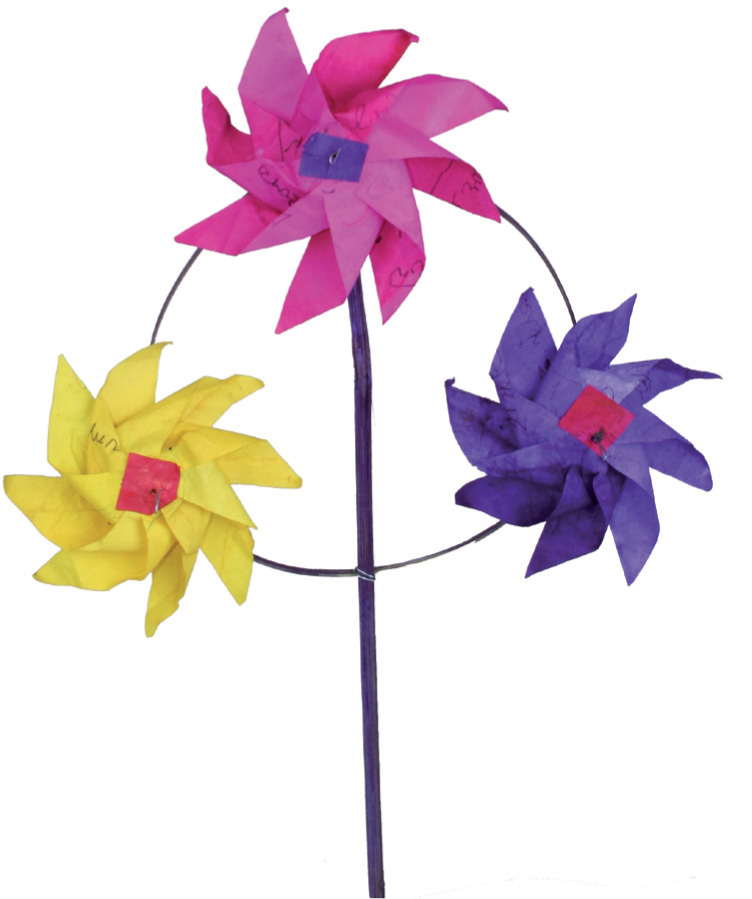
Three paper windmills mounted with wires on a bamboo frame, from Dhaka, Bangladesh.
The pattern I have followed in each chapter is to start simple, and to move, with occasional meanderings and diversions, to the design for an automaton. Thus each of the seven chapters begins by looking at some traditional moving toys, describing and evaluating the mechanisms and the materials used. It goes on to consider some possible variations and describes how to make a related moving toy. Finally, from this basis, a design is developed for a simple automaton, sometimes arising more or less directly from the mechanisms and imagery of the moving toy, sometimes adding further mechanisms, and sometimes wandering off on a bit of a tangent. Basic instructions are given for making it, but I have tried not to be too prescriptive, and I look to encourage an experimental and problem-solving approach with regard to materials and construction techniques. The message is that designing and making these simple, useless, but hopefully satisfying mechanical devices is fun, and that good results can be achieved in many different ways, depending on the materials, the tools and equipment, and the various skills that are brought to bear.
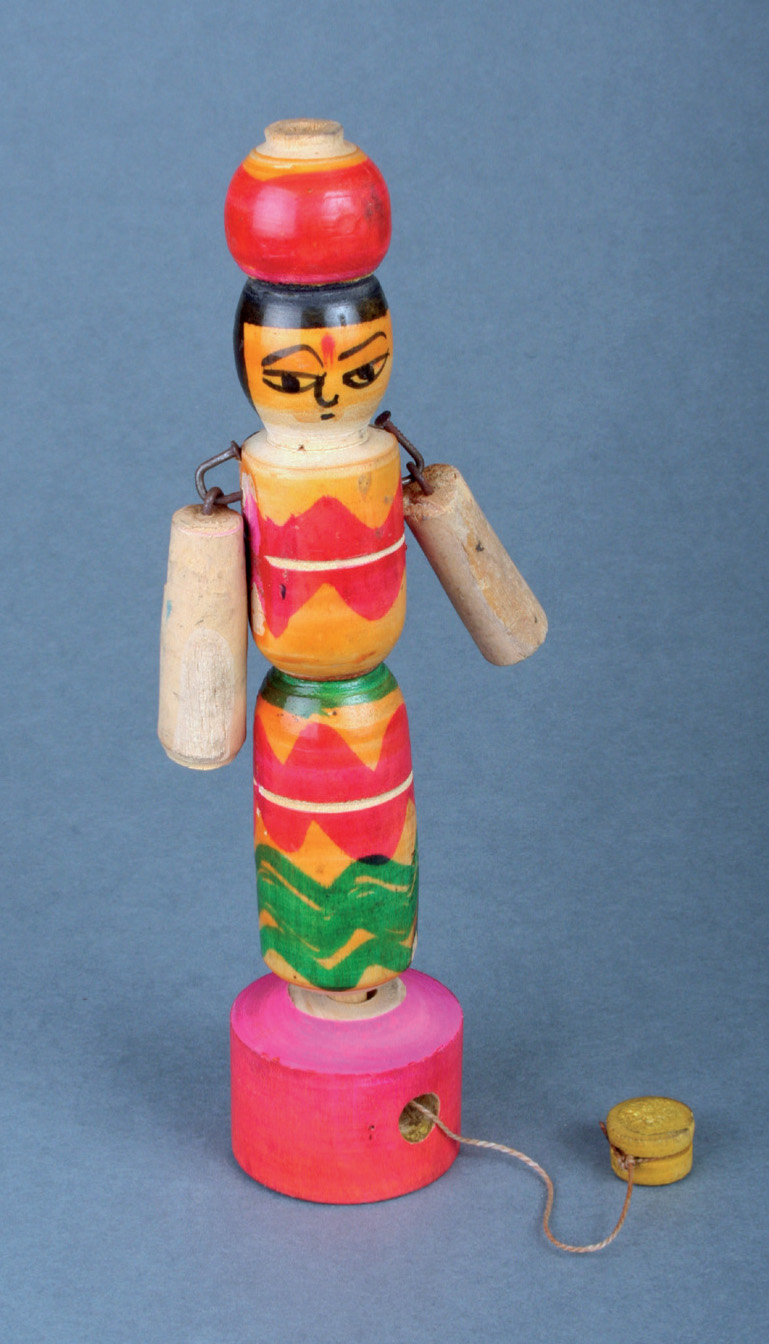
A spinning figure with loose-jointed arms in turned and painted wood, from India.
An advantage of starting with traditional moving toys is that many of them have been made using limited resources both in respect of tools and materials. Some are really simple to make. Others, despite the limited resources deployed, involve considerable patience and skill.
MATERIALS
The wood that I use is mainly scraps and off-cuts, pieces of fruit box and pallet, driftwood, and sticks from the hedgerow.

Scraps and off-cuts of wood, cocktail sticks, skewers of various diameters in birch wood and split bamboo, wooden hot drink stirrers, beads and turned axle pegs.
A range of wooden dowels is often available from DIY stores, but on a smaller scale a whole variety of sizes of cocktail sticks and skewers, made of wood or of split bamboo may be found in supermarkets, pound shops or hardware stores, as can flat wooden hot drink stirrers.
The turned wooden axle pegs that I use for various purposes are available in the USA from Woodworks Ltd (www.craftparts.com) and can be obtained in the UK from various suppliers on eBay. I find the smallest, with a 4mm (532in) shaft particularly useful.
Wooden beads are also useful necklaces from charity shops are a good source of these.
Bamboo canes can be found at garden centres, which also often stock some small diameter galvanized steel wire.
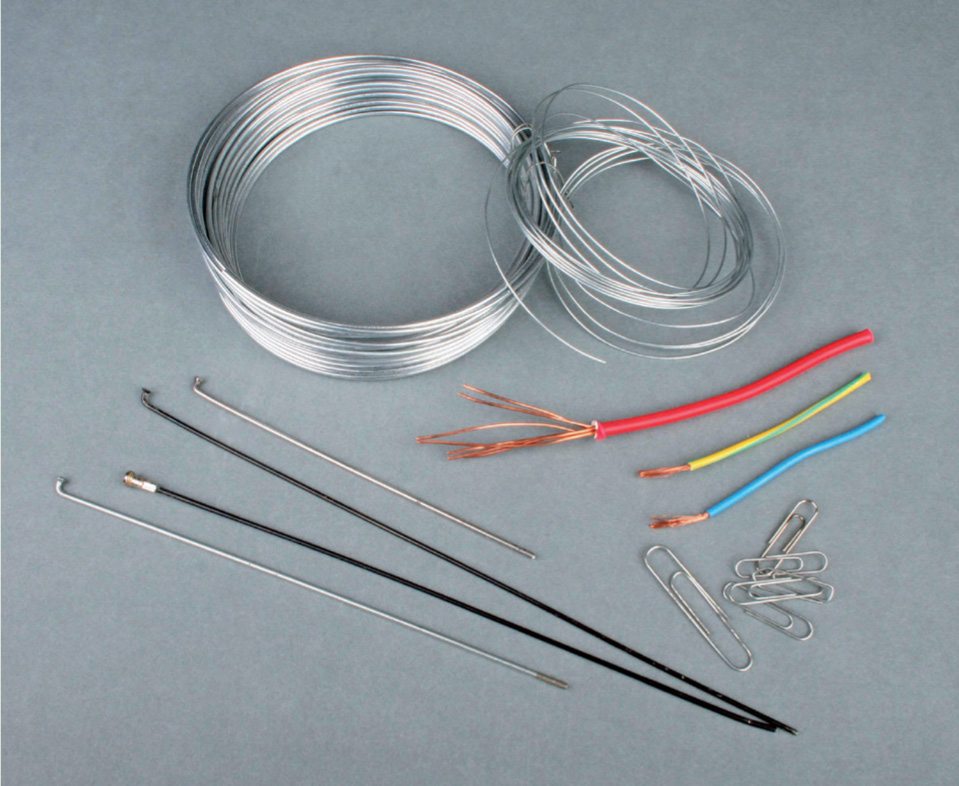
Galvanized steel wire, bicycle spokes, scraps of electrical wiring and paperclips.
Paperclips provide short pieces of wire and for slightly longer and stouter wires the spokes from broken bicycle wheels can be used.
Small screw eyes are widely available in a range of sizes.
Tools
For cutting wood, a fine-toothed saw is needed, and for cutting shapes a fret saw, or a coping saw, is useful.
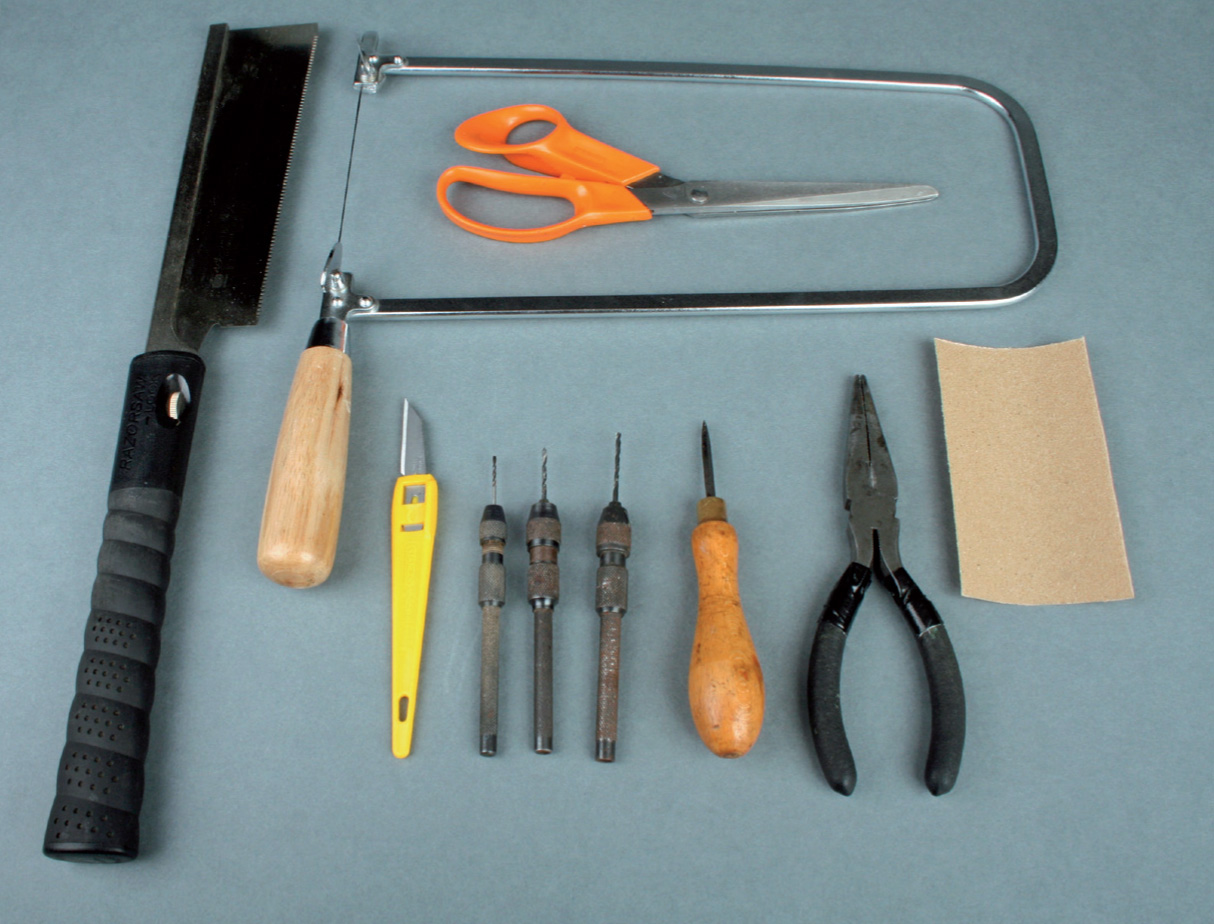
Some useful tools: a fine toothed Japanese saw, a fretsaw, a craft knife, scissors, long-nose pliers, pin vices with small drill bits, a square-bladed awl, sandpaper.
For making holes, a really useful tool is a square-sided awl, sometimes known as a birdcage awl; this can be used for marking where to drill, and for making small holes. For making more precise small holes, in the absence of a power tool, a small bit can be held in a pin vice and twisted by hand. Larger holes can be made with a hand drill, although an electric drill better still, a bench-mounted one will make things easier.
For working with wire a pair of long-nose pliers is needed. They often incorporate a cutter if not a pair of snips is needed as well.
There is an endless variety of modern glues. You may have your own favourites. I use a white PVA wood glue, and, only where necessary (for sticking metal to wood, for example) a rapid setting, 5-minute, two part epoxy.

